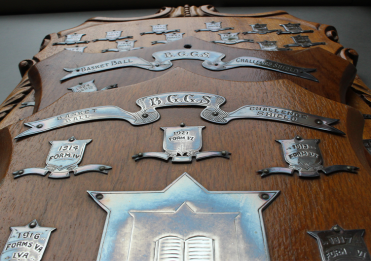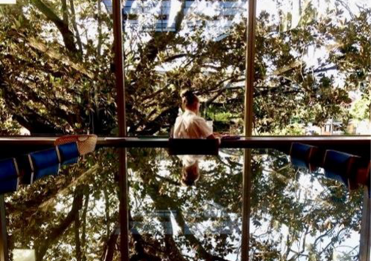There is a piece of bottle green cloth stored in the Brisbane Girls Grammar Archive in the metal-plan cabinet drawers, drawer number 14. When when folded it is the size of an A4 piece of paper—small—but once unfolded its significance is fascinating, and untangling its story is just as intriguing.
The strip of material unfolds into a banner 180 cm x 42 cm, with the name WILKINSON machine-sewn in white letters across its length and four ties, one sewn to each corner. The care and skill exhibited in the making of this banner speaks to the pride of the Wilkinson students, and more particularly, their Captain, Regina List.
Shared with the House would have been one significant woman’s contribution to Girls Grammar. Milisent Wilkinson was the seventh Head Mistress of the School, from 1900 to 1912—but the banner does not look to be over 100 years old—it is obviously not from Miss Wilkinson’s era. In fact, this object represents an important event that occurred 52 years later.
Milisent Wilkinson arrived in Australia in 1892 to teach at Melbourne Methodist (Ladies) College. She had an excellent Curriculum Vitae, was highly educated with diplomas from both Cambridge (where she had obtained the University’s Senior Honours—the highest issued to women by the university) and Oxford, and seven years of teaching experience. The following year she moved to Maryborough where she was Head Mistress at the Girls Grammar School for six years, and she was then head-hunted by Sir Samuel Griffith, Chair of the Grammar Board of Trustees, towards the end of 1899.
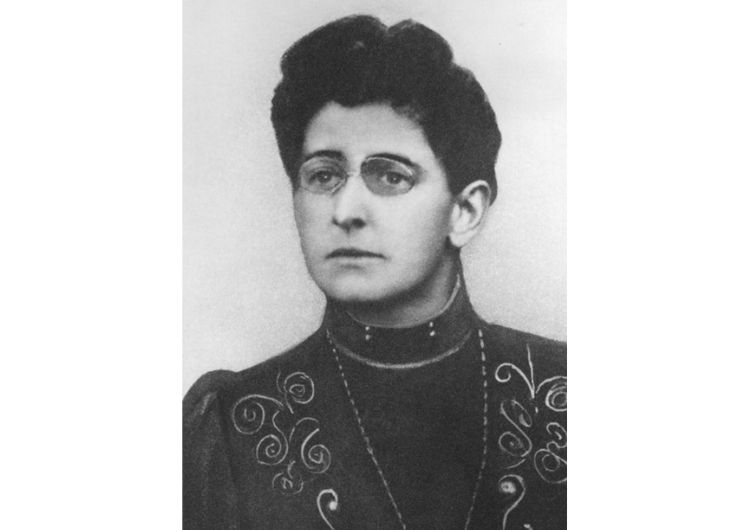
1912 Milisent Wilkinson
She acted as a consultant to the Board during the Brisbane Girls Grammar School’s upheaval over the resignation in September 1899 of the then Head Mistress, Miss Eliza Fewings. The School enrolments numbered 121 and, with the resignation, dropped to 95, impacting the School’s reputation and academic standing in the community. Owing to Wilkinson’s distinguished reputation as an educator, administrator, and first-class teacher, the Board felt safe in offering her the challenging role of leading the School out of troubled waters.
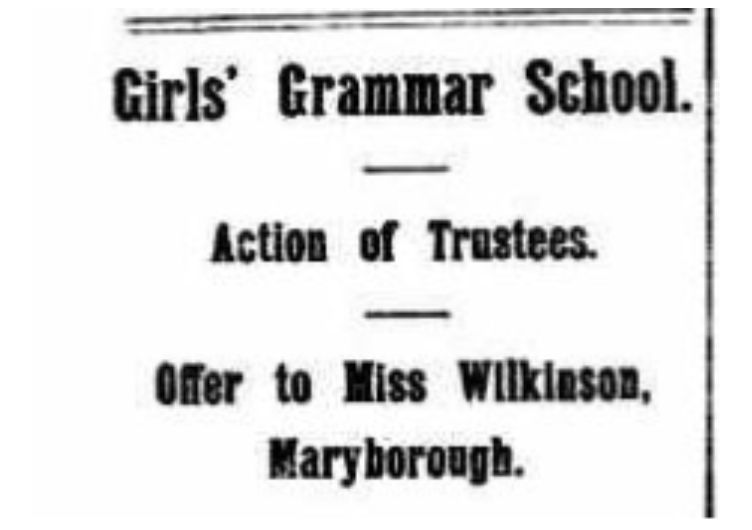
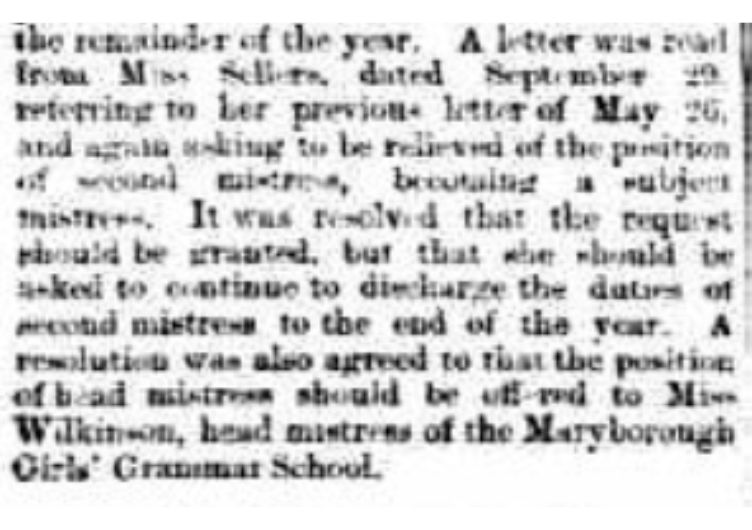
Extract from The Week, 6 October 1899 p16
Over the next twelve years she won the confidence, loyalty, and sympathy of staff and Trustees, reinvigorated the curriculum, improved the Boarding House—all of this resulting in numbers increasing by a third, to 130 pupils. Wilkinson believed that ‘School life must succeed in drawing out a girl’s capacities, cultivating to the utmost both bodily accomplishments and mental graces’ (Maryborough Chronicle, Friday 15 December 1893, p.2) and demonstrated this when she persuaded the Girls Grammar Board to install a small laboratory so that practical physics could be introduced into the curriculum. Physical Education was also very important to her, and she promoted gymnastics, swimming, tennis, cricket (she advocated for a cricket pitch on the Spring Hill campus), and rowing. She was instrumental in establishing the Queensland Girls Secondary Schools Sport Association in 1908 with her counterparts at St Margaret’s and Somerville House.
On her retirement, the Trustees described her as ‘one of the highest educationists in Australia’, and a reporter wrote in the Brisbane Courier (Saturday 14 December 1912, p. 21) that ‘The news of her retirement has brought to Miss Wilkinson letters from old pupils now scattered all over the world—letters that pay tribute to the woman, as high as any that have been paid to the educationist’.
In 1964, Form II students (later called Year 8s), commenced their secondary schooling for the first time in Queensland. In addition, the Headmistress, Mrs Louise McDonald, introduced a new structure for co-curricular competitions (predominantly sporting), namely Houses. The House system was growing in popularity in schools throughout the State. One advantage over the Form system was that older students had the opportunity to get to know younger students as well as taking an interest in their welfare. In addition, competition for the Kathleen Lilley-donated Challenge Shield for Physical Culture would be fairer; points were gained by each House, and it was hoped that a new spirit of loyalty, devotion, and service would be created. Mrs McDonald felt that this system would also provide more senior girls with a greater opportunity to take responsibility and display leadership (Board Minutes 12 Feb 1964 Head Mistress’s Report).
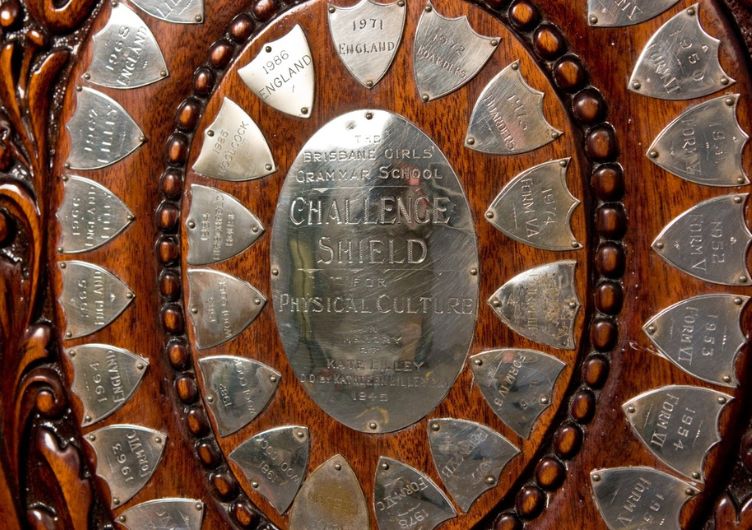
The Challenge Shield for Physical Culture (detail). Note winning Houses, forms, and Boarders House.
Initially, there were ten Houses, each with its own distinct colour. Five were named after Chairs of the Board of Trustees: Lilley; Griffith; Woolcock; Lockhart–Gibson (shortened eventually to Gibson); and England. Five were named after former Headmistresses: O’Connor; Mackinlay; Beanland; Wilkinson; and Mackay.
Naming a House after Milisent Wilkinson was a perfect choice as she believed that, if girls were given an equal opportunity to play sport and participate in team activities, they would be given the opportunity to develop qualities like self-restraint, good fellowship when pursuing a common aim, the ability to take defeat in good part, and esprit de corps (Head Mistress’s Report at the 1908 Speech Day). These are the very characteristics Grammar girls espouse today, and what better way to nurture these qualities than in the heart and spirit of their House?
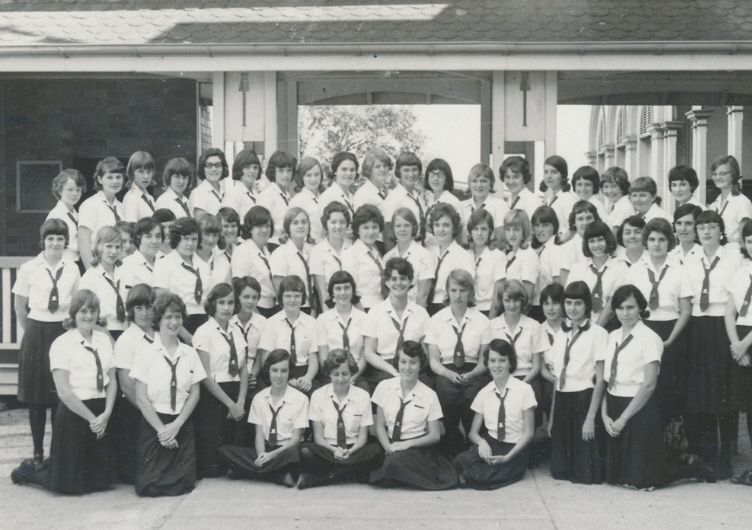
1964 Wilkinson House members
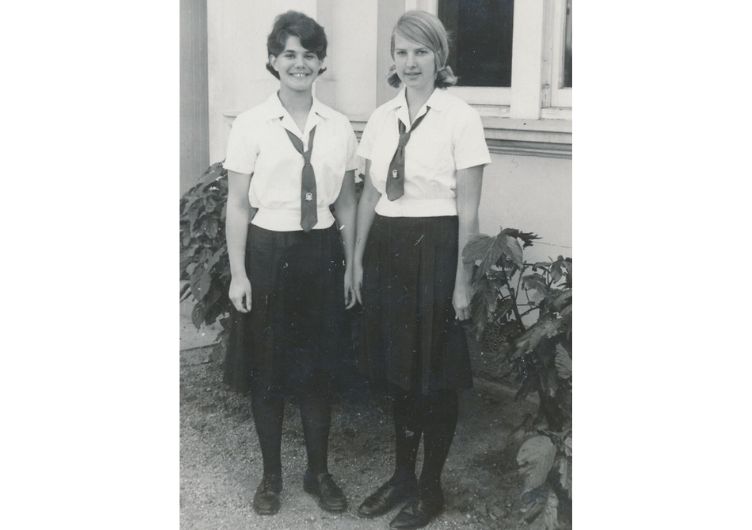
1964 House Captain, Regina List (left), and Vice-Captain, Elizabeth Hardcastle.
Wilkinson House flourished—girls dressed in bottle green socks to represent their House on the sports field, in the swimming pool, on the netball and tennis courts, and in the Gymnasium tumbling on the floor mats or singing, debating, and acting. These were all performed under the watchful eyes of staff members, Miss June McNamara and Miss ME Eckermann, and Captain, Regina List, and Vice-Captain, Elizabeth Hardcastle.
When conferring with Regina’s family what unfolds has shed some light on the creation of the banner. Regina’s family established Freedman and Company, well-known tailors in Fortitude Valley. Regina and her mother, Sheba (1935), were avid seamstresses and the family consensus is that it is highly probable that Regina and her mother created the House banner. Regina, being highly organised, thorough, and someone who sewed her own clothes, would have been more than capable of creating this neat and precise banner. Sadly, the banner was not going to get extended usage.
The comradeship developing in Wilkinson House was to be short-lived as, two years later, with roughly only 70 students per House, the staff found that the Co-curricular program was too difficult to sustain or make competitive. A large proportion of students were in the Junior School, and frequently students left after Year 10 to enter the workforce, thus impacting each House’s effectiveness.
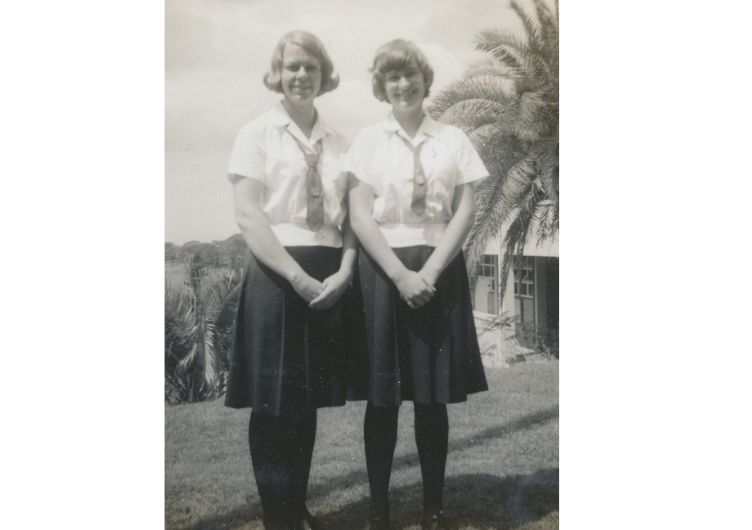
1965 Wilkinson Captain, Margaret Schneider, and Vice-Captain, Jeanne Nash.
In 1966, the number of Houses was reduced to five: Gibson; Griffith; Lilley; Woolcock; and England. Wilkinson House was merged with Gibson, the ‘purple’ House. With approximately 143 students in each House, sporting and cultural activities flourished but the bottle green socks disappeared.
The history of Houses has been a chequered one. After reducing the total number of houses to five, the 1970s saw a Boarders House emerge in 1971, and then the return to interform competition in 1974 until 1979.
The pastoral value afforded by the House system was once again acknowledged by the Principal, Judith Hancock, and subsequently, the system returned in 1980 with a new House, Hirschfeld, established.
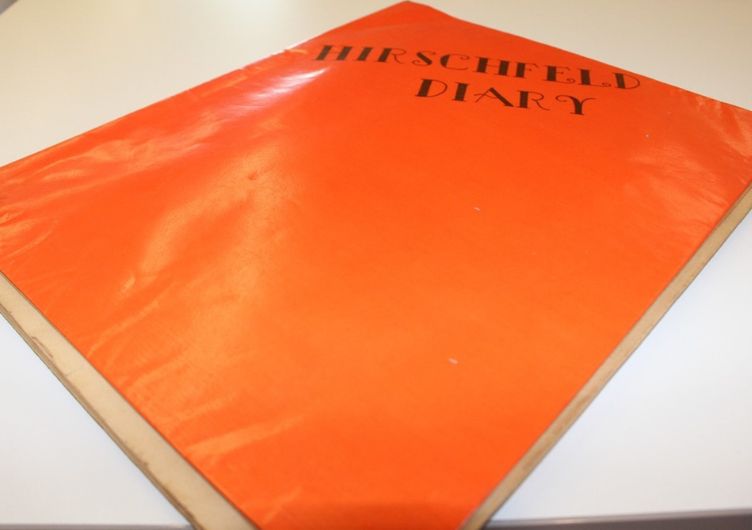
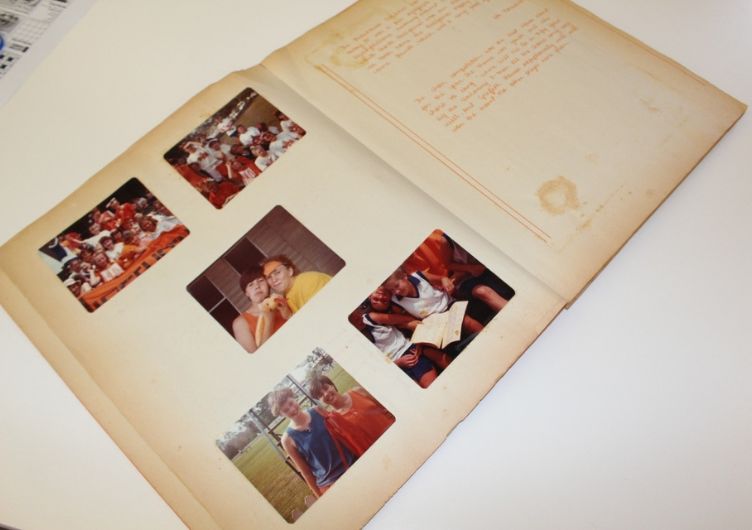
1985 Hirschfeld Diary
As the School’s population grew, so too did the need for more Houses and thus, the re-emergence of the names of past Houses. In 1990, O’Connor was reintroduced, followed by Beanland in 1994 and, 44 years after this pastoral concept was introduced by Louise McDonald, Mackay became the ninth house in 1998.
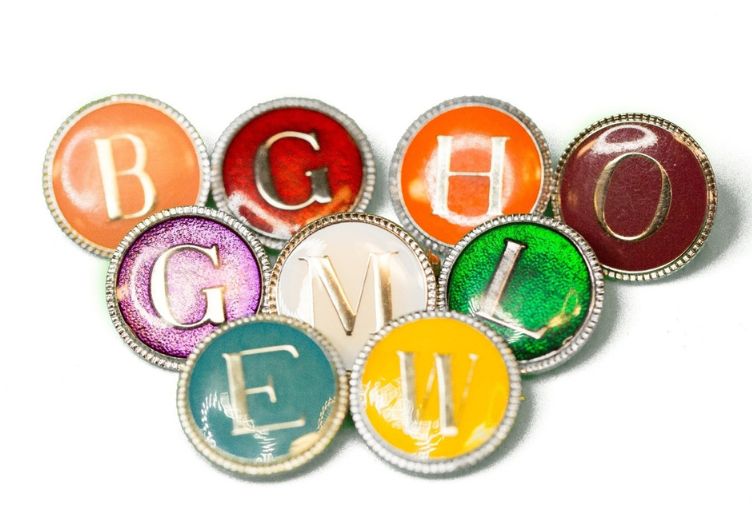
Current House badges
Unfortunately, despite Milisent Wilkinson’s personal qualities and values, so similar to those of the School’s as laid out in its Intent which encourages ‘young women to contribute confidently to their world with wisdom imagination and integrity’, none of the reintroduced Houses were named after her. A past staff member and old girl recalls asking the Deputy Headmistress, Miss Doreen Thomas, (later Doreen Yates), who had been involved in the original organisation, as to why this was the case. Her memory was that Milisent Wilkinson had already been accorded acknowledgement. The Milisent Wilkinson Prize for Tennis Champion was created in 1949 from a bequest from her estate for ‘the use of the pupils … so that they may be able to become fine sportswomen and noted tennis players.’
Although we have not yet unearthed the origin and provenance of the carefully preserved green Wilkinson banner, we do have the granddaughters of the first Wilkinson House Captain, Regina List, currently attending Girls Grammar. Orli (10B) and Trudi Wachtel (8B) are in Beanland House and, as third generation Grammar girls, have a unique connection to both the House system and Houses that have disappeared. Perhaps with our ever-growing population, we can look forward to a reinstatement of Wilkinson House—watch this green space!
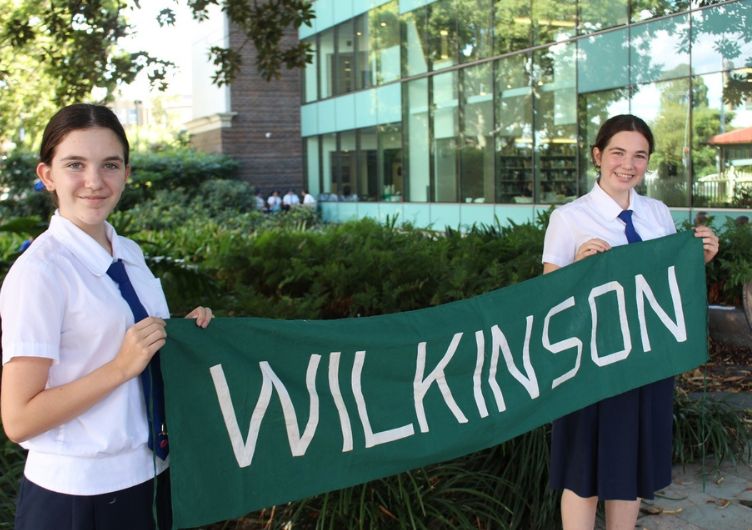
2023 Trudi and Orli Wachtel, granddaughters of Regina List, the first House Captain of Wilkinson
Jenny Davis
Research Officer—Sesquicentenary
References
1908 Speech Day Head Mistress’s Report
BGGS Board Minutes 12 Feb 1964 Head Mistress’s Report
Brisbane Courier (Saturday 14 December 1912, page 21), The Retirement of Miss Wilkinson.
Extract from Harvey-Short, P. BGGS Sports History “Health, Physical Education and Sport: Hygiene, Indian Clubs, and Tennis”
Grammar Gazette Spring 2010 Community and Connectedness by Felicity Williams and Elizabeth Hatton.
Maryborough Chronicle, Friday 15 December 1893, School holidays: Grammar School Speech Day.
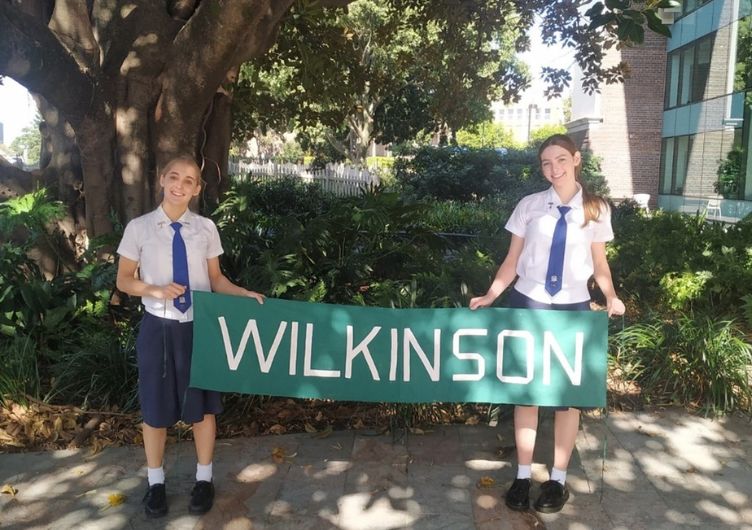
2023 Gibson House Captains, Ginger McKeddie and Ruby Hindman, hold the Wilkinson banner as Gibson and Wilkinson merged in 1966.


